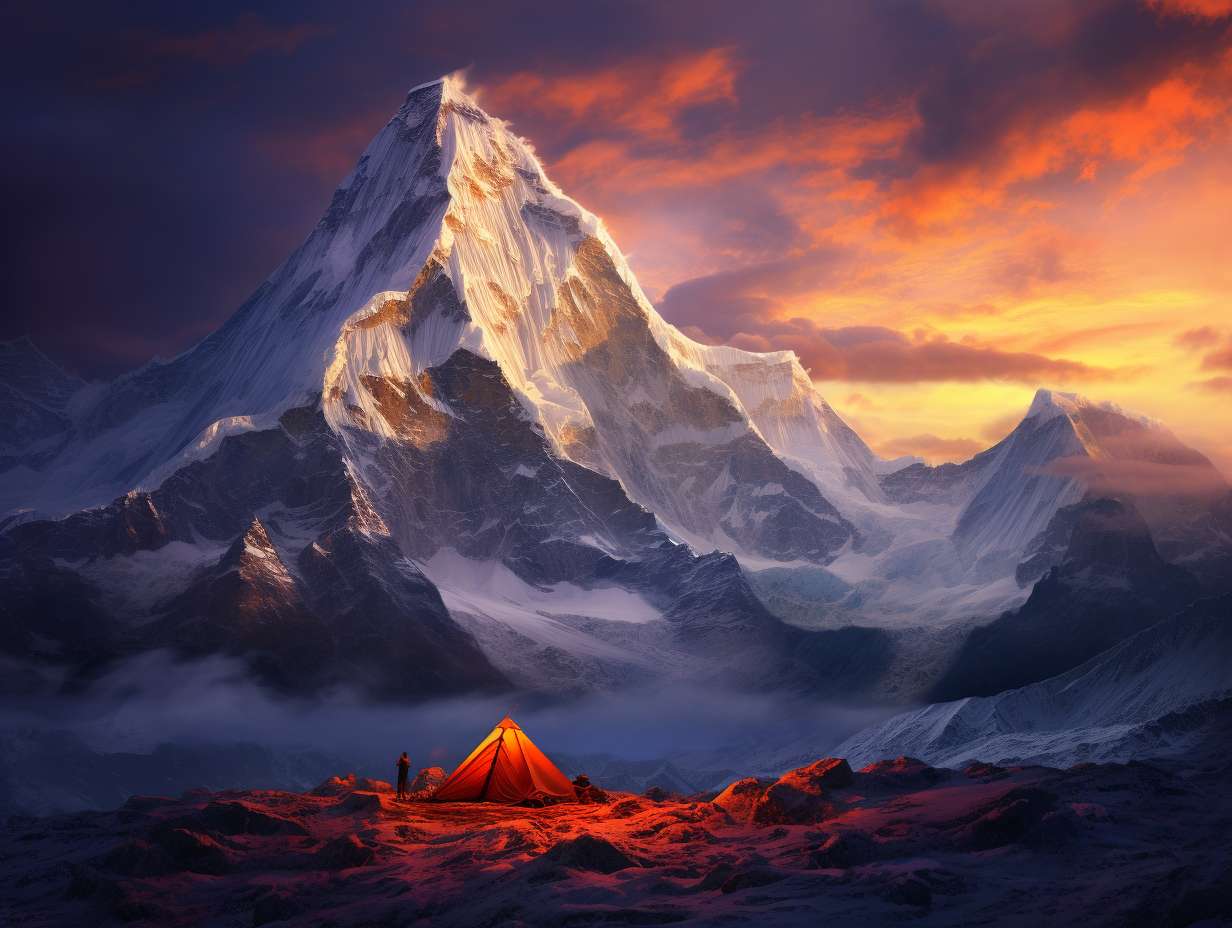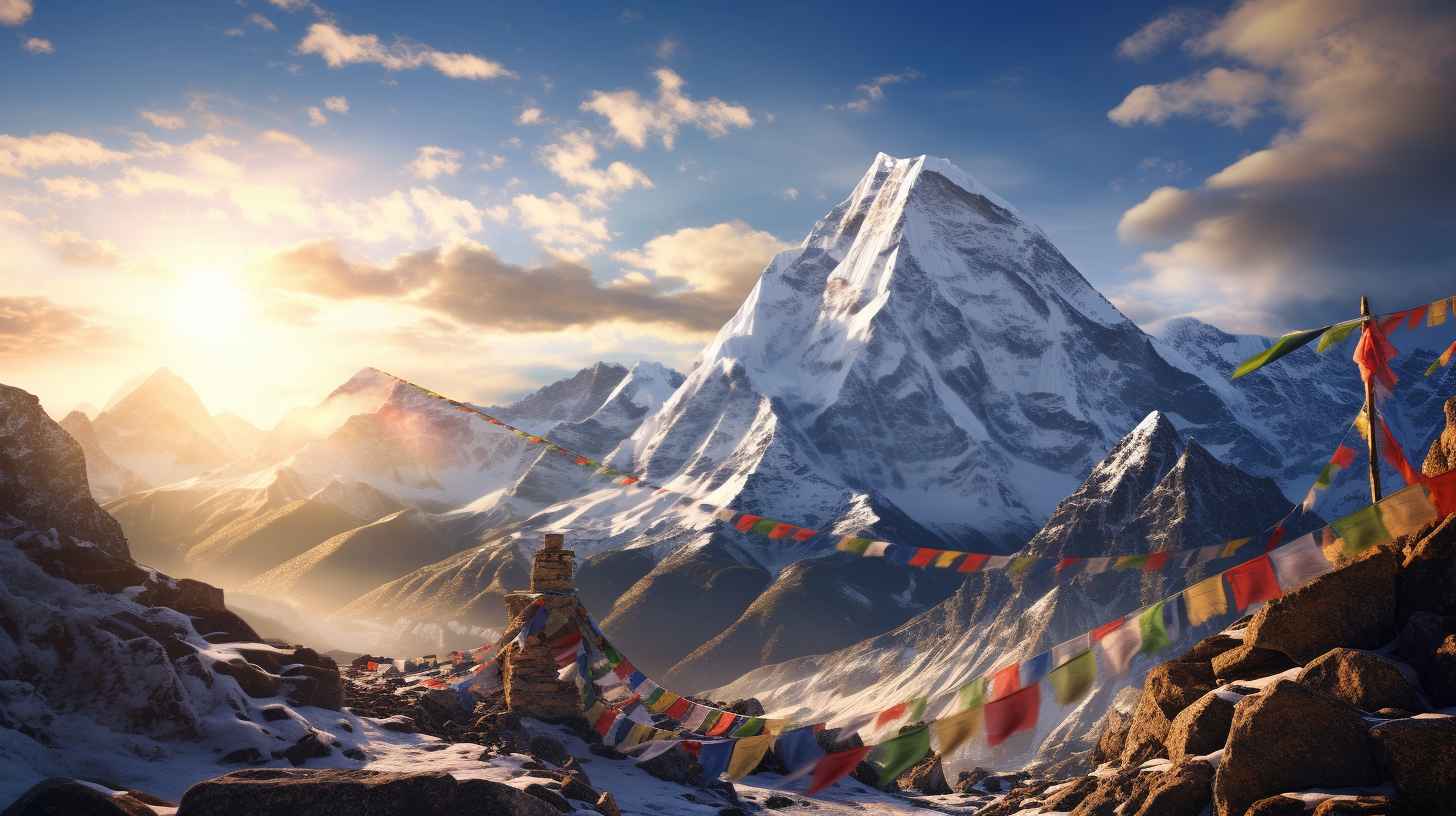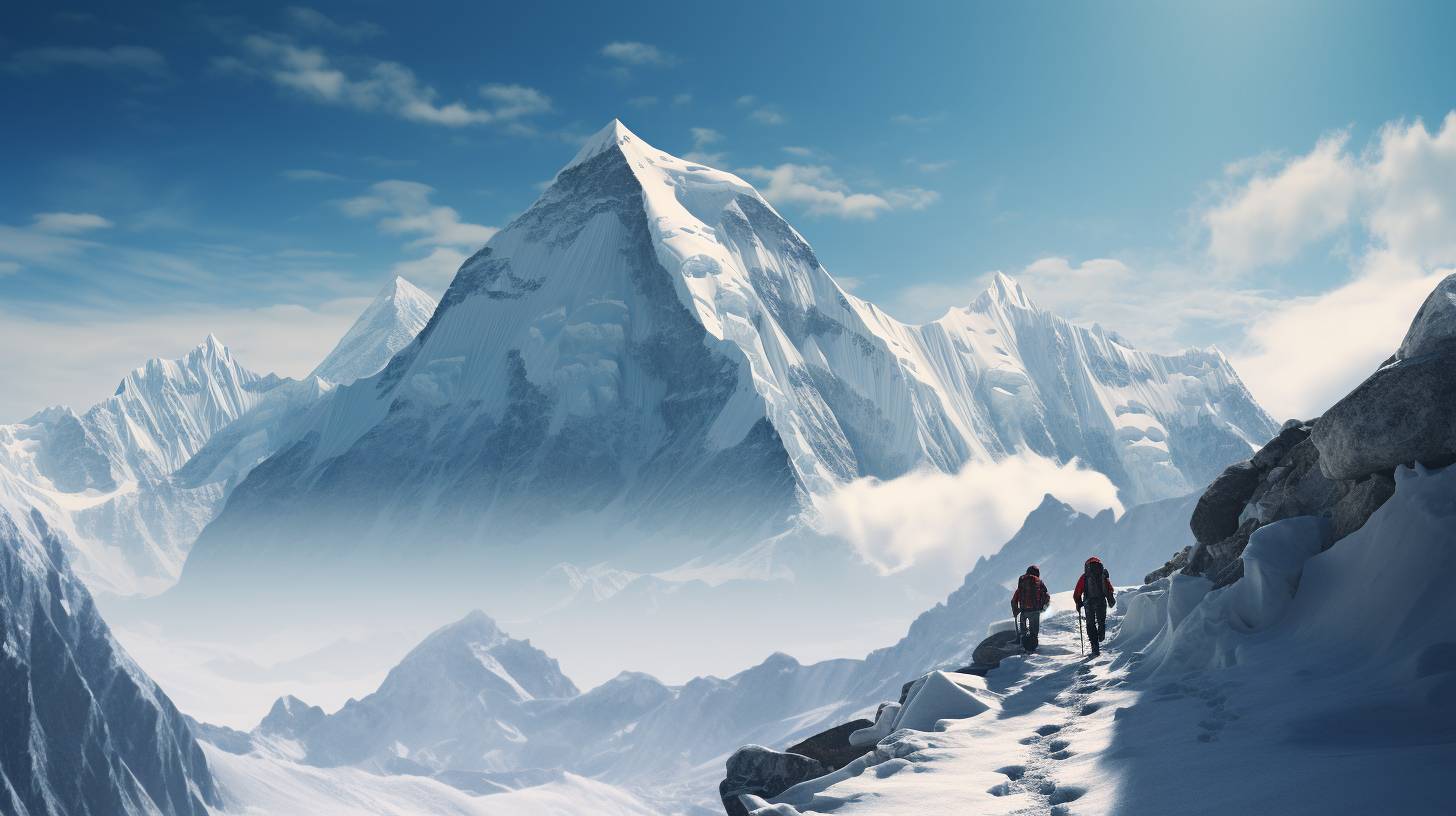
How High Is Camp 3 on Everest

Have you ever wondered just how high Camp 3 on Everest really is? Well, prepare to be amazed!
Camp 3, nestled at an altitude of over 23,000 feet, serves as a crucial stepping stone on the path to the summit. This camp, characterized by treacherous terrain and bone-chilling temperatures, poses significant challenges to even the most experienced climbers.
So, strap on your crampons and get ready to delve into the depths of Camp 3, where triumph and danger collide at dizzying heights.
Key Takeaways
- Camp 3 is located at an elevation of approximately 7,200 meters.
- It is considered part of the death zone due to lack of oxygen.
- Camp 3 serves as a vital acclimatization point for climbers on Everest.
- Time spent at Camp 3 allows climbers to adapt to thinning air and lower oxygen levels.
The Importance of Camp 3
Camp 3 plays a crucial role in your Everest expedition, serving as a vital acclimatization point for climbers. It’s strategically located at an elevation of around 7,200 meters, providing a necessary pause in your ascent to help your body adapt to the extreme altitude.
The advantages of spending time at Camp 3 are numerous. Firstly, it allows you to gradually expose yourself to the thin air, reducing the risk of developing altitude sickness. Secondly, it provides an opportunity to test your physical and mental endurance before tackling higher camps. Moreover, staying at Camp 3 enables you to refine your climbing strategies, fine-tuning your equipment and adjusting to the challenging environment.
This camp acts as a gateway to higher altitudes, and its importance can’t be overstated in ensuring a successful and safe climb to the summit of Mount Everest.
Challenges Faced at Camp 3
At an elevation of approximately 7,200 meters, you’ll encounter numerous challenges during your stay at Camp 3 on Everest. The acclimatization process at this high altitude can be physically and mentally demanding.
Here are some of the challenges faced:
-
Extreme weather conditions: Camp 3 is exposed to strong winds, low temperatures, and unpredictable weather patterns, making it crucial to have proper gear and equipment.
-
Oxygen deprivation: The thin air at this altitude contains less oxygen, resulting in decreased physical performance and increased fatigue.
-
Limited resources: Camp 3 is a remote location with limited supplies, making it essential to carefully plan and ration food, water, and fuel.
-
Physical exertion: Climbing to Camp 3 involves navigating steep slopes, rocky terrains, and crevasses, demanding endurance and strength.
-
Altitude sickness: The risk of altitude-related illnesses such as acute mountain sickness and high altitude pulmonary edema increases at Camp 3, requiring careful monitoring and acclimatization protocols.
Navigating these challenges successfully is crucial for a safe and successful ascent of Mount Everest.
Altitude and Elevation of Camp 3

When you reach Camp 3 on Everest, you will find yourself at an elevation of approximately 7,200 meters. At this altitude, you are well into the death zone, where the lack of oxygen poses significant challenges to climbers. The climbing routes to Camp 3 vary depending on the expedition, but common routes include the South Col route and the North Col route. These routes require climbers to navigate treacherous terrain, including steep ice slopes and exposed ridges. The table below provides a comparison of the altitude and climbing routes for Camp 3 on Everest.
| Camp 3 Altitude | Climbing Routes |
|---|---|
| 7,200 meters | South Col route |
| North Col route |
Knowing the altitude and climbing routes of Camp 3 is essential for mountaineers to plan their ascent and prepare for the altitude challenges they will encounter.
Climbing Routes to Camp 3
To reach Camp 3 on Everest, you must navigate through treacherous terrain and conquer steep ice slopes. The climbing routes to Camp 3 require advanced climbing techniques and specialized gear to ensure safety and success. Here are the key aspects of these routes:
-
Khumbu Icefall: This section is notorious for its unstable ice towers and crevasses. Climbers must carefully navigate through ladders and fixed ropes to cross this treacherous terrain.
-
Western Cwm: This wide, flat valley is often referred to as the ‘Valley of Silence.’ Climbers need to traverse the glacier’s slopes and avoid dangerous ice cliffs.
-
Lhotse Face: This steep ice slope poses a significant challenge. Climbers ascend using fixed ropes and ice axes, utilizing proper crampon techniques.
-
Yellow Band: This rocky area requires careful footwork and climbing skills to navigate the exposed terrain.
-
Geneva Spur: This rocky ridge demands precise foot placement and efficient use of climbing equipment to overcome its technical sections.
Successful navigation of these routes requires climbers to have the appropriate gear, including ice axes, crampons, harnesses, helmets, and ropes. Additionally, a solid understanding of climbing techniques such as rope management and self-arrest is essential for a safe ascent to Camp 3.
Camp 3: A Stepping Stone to the Summit

As you progress through the challenging climbing routes to Camp 3 on Everest, this high camp serves as a crucial stepping stone towards reaching the summit. Camp 3 is situated at an altitude of around 7,200 meters (23,600 feet), which makes it a vital location for the acclimatization process.
At this height, your body needs time to adjust to the thinning air and lower oxygen levels. Spending several nights at Camp 3 allows your body to adapt gradually, improving your chances of successfully reaching the summit.
In terms of equipment required, you’ll need a sturdy tent, a warm sleeping bag, and a reliable cooking stove to withstand the extreme weather conditions. Additionally, proper clothing, including down jackets, insulated pants, and mountaineering boots, are essential for navigating the challenging terrain.
Conclusion
As you reach the summit of Mount Everest, the significance of Camp 3 becomes evident.
This crucial checkpoint, located at an altitude of approximately 7,200 meters, poses numerous challenges due to its extreme elevation. Climbing routes to Camp 3 are treacherous, requiring expertise and experience.
With its strategic positioning, Camp 3 serves as a stepping stone towards conquering the summit. Like a beacon guiding climbers through the unforgiving terrain, it signifies the unwavering determination and resilience required to reach the pinnacle of this majestic mountain.
Disclaimer: Some information is provided through AI. Users should always conduct their own research and consult with qualified professionals before making any decisions.Affiliate information declaration: We may earn revenue from the products referred on this page and participate in affiliate programs.


